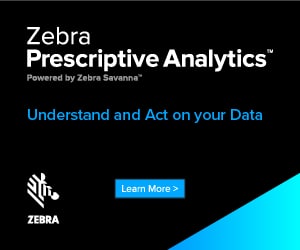Now more than ever, customers expect the freedom to transact wherever and whenever it is most convenient for them. As a result, omnichannel services like buy online, return in store (BORIS) are here to stay for the long run, and retailers must evaluate and optimize the processes to ensure they remain both profitable and convenient for customers.
To optimize their BORIS processes, retailers must have a clear line of communication between their point of sale (POS) and e-commerce systems. If these two systems cannot efficiently draw information from one another, the consequences can be very costly. Here are some examples of issues that can arise within BORIS processes, plus how to resolve them with advanced technology.
Lack of Visibility
A key risk with BORIS is data visibility across channels. Remember that BORIS customers will have originally placed their orders via the e-commerce channel and are now returning them via the in-store POS. This means those two systems must be able to communicate in real time to control risk in the same way that single-channel risks are controlled.
For example, imagine a customer wants to make a BORIS return. Upon the return barcode being scanned, the POS should be able to dig within the e-commerce system to see:
-
- What was on the original order.
- How many of those items have already been returned.
Preventing double returns from the same, original receipt is one of the most fundamental systemic controls found in nearly every POS system. Unfortunately, many retailers do not have this level of real-time communication across channels, meaning that their associates lack the confidence of knowing the systems are preventing these basic profit leakages. The disconnect may be for any number of reasons, such as…
-
- The POS has no connection to the e-commerce system.
- The POS does not recognize e-commerce order forms and/or packing slips when scanned, forcing the associates to enter or look up each order manually.
- The POS has not been set up to recognize merchandise that is an “online exclusive” and not sold in stores.
Mitigating these issues often involves processing the transaction as some sort of non-receipted return. This creates a huge amount of risk, opening the business up for double returns and wrong-price returns, as well as the additional fraud risk from associates becoming a little too comfortable processing returns without receipts.
Delayed Communication
Even retailers who do have their e-commerce and POS systems connected are at risk of another type of disconnect. In many cases, customer-facing services like BORIS are set up with far more urgency and scrappiness than the related systemic and process controls. One side effect of this quick development when connecting POS to the e-commerce channel can be a delay in information transfer—meaning that the POS may not have access to the latest real-time data when needed.
For example, imagine a customer returns an online-purchased item via the website or by calling customer service. The return goes through and the customer is refunded the value back to his or her credit card. Then the customer takes that same item and tries to return it again at the store. If the retailer’s systems aren’t communicating quickly enough, the POS may not see any record of the customer’s recent e-commerce return. Thus, the customer receives a double refund for a single item, all thanks to a simple data delay. As we all know, both professional and opportunistic thieves alike will quickly identify and exploit systemic disconnects such as these, and the losses can add up fast.
The Remedy
So, what’s the solution? An advanced analytics solution like prescriptive analytics can help create a clear view of both your e-commerce and POS systems in one place. Prescriptive analytics is a software solution that leverages AI and machine learning to analyze data and determine:
-
- What is happening.
- Why it happened.
- How much it is costing you.
- What to do about it.
- Who should do it.
One of the key advantages of prescriptive analytics is its ability to take in a variety of data streams from almost any source and in almost any format. The solution analyzes and correlates data streams from completely different systems, including those that are “siloed” – like POS and e-commerce, for example.
With access to critical data from both channels, a prescriptive analytics solution quickly identifies inconsistencies within that data such as duplicate returns, returns of items with no record of being purchased, suspicious patterns of buying and returning the same item(s), etc. Prescriptive analytics allows retailers to automate the identification of BORIS issues, immediately take action, and consistently track value to both build fraud cases as well as assemble business cases to persuade the organization to optimize processes and systemic controls.
For more information on using prescriptive analytics to improve omnichannel operations, visit zebra.com/prescriptiveanalytics.









